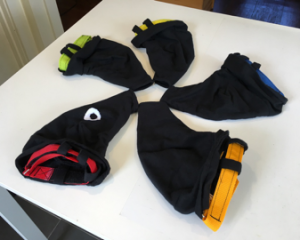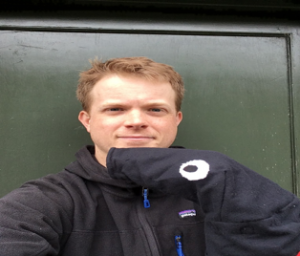Antarctica Preparations I: 08/10/2019
Penguin goods & safe handling procedures
Avian ecologist have always used hoods as a method to cover the heads of the bird species they study. These hoods cover the eyes of the animal and reduce their stress while researchers take measurements such as weight, wing and bill length, and blood samples. Birds can be very sensitive to sudden movements, noises and changes in light and hoods are used to reduce these sensitivities by covering their eyes and ears. Once the hoods are placed over the bird’s head they quickly become more calm. Placing a hood on the bird creates a safe and comfortable environment for the subject while biological measurements are taken.
In preparation for our upcoming trip to Antarctica (October 2019) we have sewn our very own emperor penguin hoods. Each of these hoods has been hand made out of durable, soft, very thin and breathable dark fabric. These penguin hoods have a comfortable neck strap that allows us to adjust the fit of the hood per the penguin’s liking. There is an opening at the tip of the hoods that allows for the bill of the penguin to fit through and increases airflow for ease of breathing. The hoods are placed on the heads of the penguin similar to what it would look like if you placed a sock puppet on your hand (as displayed by Parker in the adjacent image). An eye cutout was placed on one of the hoods to display the approximate location of where the penguin eye would be located under the hood.
We are very excited to share our preparation processes as we get our gear ready for our trip to Antarctica. Stay tuned for upcoming posts on our penguin preparation: tag development, weight harness manufacturing, and more information on our upcoming trip.
Safety First,
Emperor Penguin Field Crew










